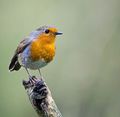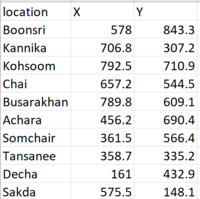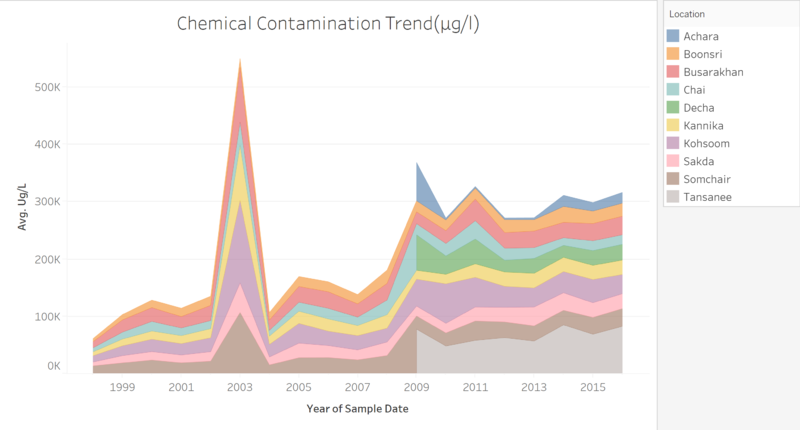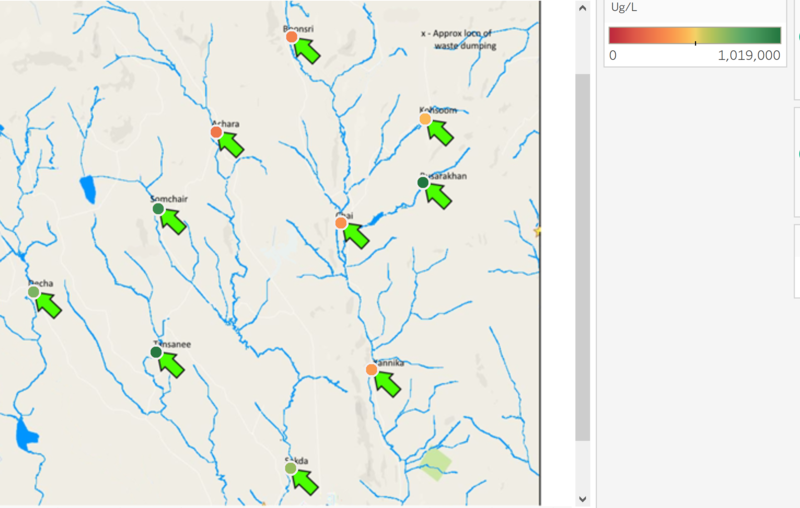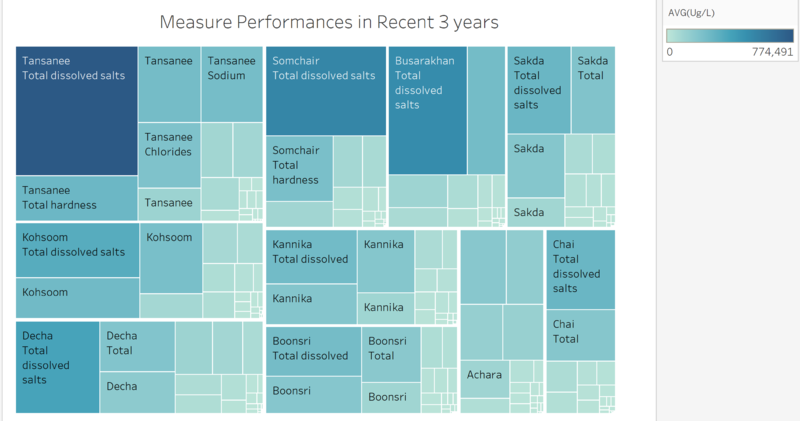Difference between revisions of "ISSS608 2017-18 T3 Assign Xie Zhimao Method"
Jump to navigation
Jump to search
(Created page with "<div style=background:#A7CEA1 border:#A3BFB1> 120px <b><font size = 6; color="#3a2e29"; style="font-family:Century Gothic"> Mini-Challen...") |
|||
| (11 intermediate revisions by the same user not shown) | |||
| Line 1: | Line 1: | ||
<div style=background:#A7CEA1 border:#A3BFB1> | <div style=background:#A7CEA1 border:#A3BFB1> | ||
[[Image:Zhimao2.jpg|120px]] | [[Image:Zhimao2.jpg|120px]] | ||
| − | <b><font size = 6; color="#3a2e29"; style="font-family:Century Gothic">   Mini-Challenge 2 | + | <b><font size = 6; color="#3a2e29"; style="font-family:Century Gothic">   2018 Mini-Challenge 2 Method</font></b> |
</div> | </div> | ||
<!--Navigation--> | <!--Navigation--> | ||
{|style="background-color:#0b3d53;" width="100%" cellspacing="0" cellpadding="0" valign="top" border="0" | | {|style="background-color:#0b3d53;" width="100%" cellspacing="0" cellpadding="0" valign="top" border="0" | | ||
| − | | style="font-family:Century Gothic; font-size:100% | + | | style="font-family:Century Gothic; font-weight:bold; font-size:100%; text-align:center; background-color:#A7CEA1; width=25%" | |
; | ; | ||
[[ISSS608_2017-18_T3_Assign_Xie_Zhimao|<font color="#000000">Overview</font>]] | [[ISSS608_2017-18_T3_Assign_Xie_Zhimao|<font color="#000000">Overview</font>]] | ||
| − | | style="font-family:Century Gothic; font-weight:bold; font-size:100%; text-align:center; background-color:# | + | | style="font-family:Century Gothic; font-weight:bold; font-size:100%; text-align:center; background-color:#eae5e4; width=25%" | |
; | ; | ||
| − | [[ISSS608_2017-18_T3_Assign_Xie_Zhimao_Method|<font color="#000000"> | + | [[ISSS608_2017-18_T3_Assign_Xie_Zhimao_Method|<font color="#000000">Data Preparation</font>]] |
| style="font-family:Century Gothic; font-weight:bold; font-size:100%; text-align:center; background-color:#A7CEA1; width=25%" | | | style="font-family:Century Gothic; font-weight:bold; font-size:100%; text-align:center; background-color:#A7CEA1; width=25%" | | ||
| Line 23: | Line 23: | ||
<br><br> | <br><br> | ||
<div style="background:#A7CEA1; border:#002060; padding-left:15px; text-align:left;"> | <div style="background:#A7CEA1; border:#002060; padding-left:15px; text-align:left;"> | ||
| − | <font size = 3; color="#FFFFFF"><span style="font-family:Century Gothic;"> | + | <font size = 3; color="#FFFFFF"><span style="font-family:Century Gothic;">Tools Description</span></font> |
| − | </div> | + | </div> |
| − | + | <div style="margin:0px; padding: 2px; border-radius: 1px; text-align:left"> | |
| − | <br><br> | + | {| class="wikitable" style="background-color:#FFFFFF;" width="100%" |
| − | + | |- | |
| − | <br><br> | + | | |
| − | + | *SAS JMP Pro | |
| − | + | *Microsoft Excel | |
| − | + | *Tableau | |
| − | + | |} | |
| − | + | </div> | |
| + | |||
| + | <div style="margin:0px; padding: 2px; border-radius: 1px; text-align:left"> | ||
| + | {| class="wikitable" style="background-color:#FFFFFF;" width="100%" | ||
| + | |- | ||
| + | | | ||
| + | <b>No.</b> | ||
| + | || | ||
| + | <b> Approach</b> | ||
| + | || | ||
| + | <b>  Description</b> | ||
| + | |- | ||
| + | | | ||
| + | 1. | ||
| + | || | ||
| + | SAS JMP Pro<br> | ||
| + | ( Data Exploration) | ||
| + | || | ||
| + | *Use SAS JMP Pro to open the metadata and check the ditribution and validity of the data.<br>[[File:Zhimao3.png|500px]][[File:Zhimao4.png|500px]] | ||
| + | *We found the missing data is <b>0</b> and there is no obviously unreasonable skewed distribution, so our initial clean step is complete. | ||
| + | *However, when it refers to chemical units of measure, we noticed there are different units, such as mg/l and μg/l. Therefore, we need further data wrangling by use Microsoft Excel. | ||
| + | |- | ||
| + | | | ||
| + | 2. | ||
| + | || | ||
| + | Microsoft Excel<br> | ||
| + | (Data Wrangling) | ||
| + | || | ||
| + | *Use filter and pivot table function in Microsoft Excel extract out the data we need and rename them as revised value(μg/l). | ||
| + | *Given thr geographical analysis we also record the geo-code of background image in the data file.[[File:Zhimao5.png|200px]] | ||
| + | |- | ||
| + | | | ||
| + | 3. | ||
| + | || | ||
| + |   Tableau<br> | ||
| + | (Data Analysis) | ||
| + | || | ||
| + | *Import raw data into Tableau and inner join the geo-code.[[File:Zhimao6.png|500px]] | ||
| + | <br> | ||
| + | *From the view of trend change, we can oberserve there are two dramaticlly increase in both 2003 and 2009. | ||
| + | *In addition, 2 locations were taken into consideration of sampling extraction site since 2009. Especillay in Tansanee, it always occupies the largest value of chemical contamination in recent years.<br> | ||
| + | [[File:Zhimao7.png|800px|center]] | ||
| + | <br> | ||
| + | *To prove whether the Kasios Furniture Company caused environmental damage to the Boonsong Lekagul Wildlife Preserve, we select the sample from recent 3 years and combined them with the maps.<br> | ||
| + | [[File:Zhimao8.png|800px|center]] | ||
<br> | <br> | ||
| − | + | *To be specific, we would like to view the measure performances in different locations in a treemap. | |
| − | + | [[File:Zhimao9.png|800px|center]] | |
| − | [[ | + | |- |
| + | |} | ||
</div> | </div> | ||
| − | |||
| − | |||
| − | |||
Latest revision as of 22:02, 7 July 2018
|
|
|
|
|
Tools Description
|
